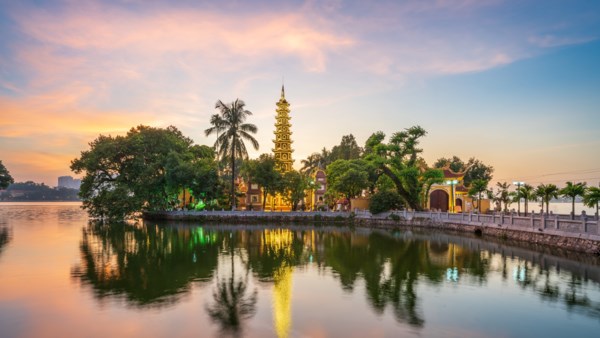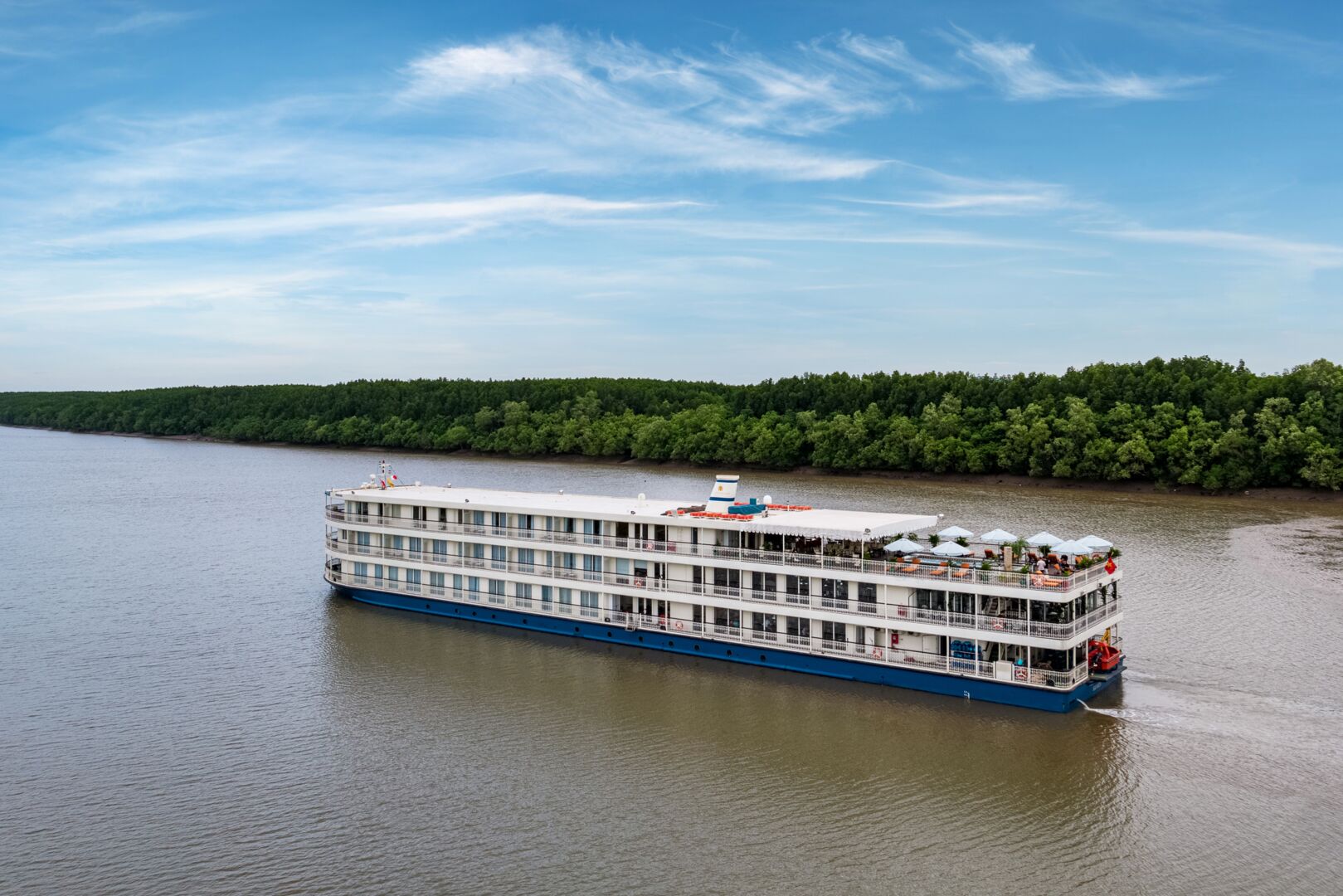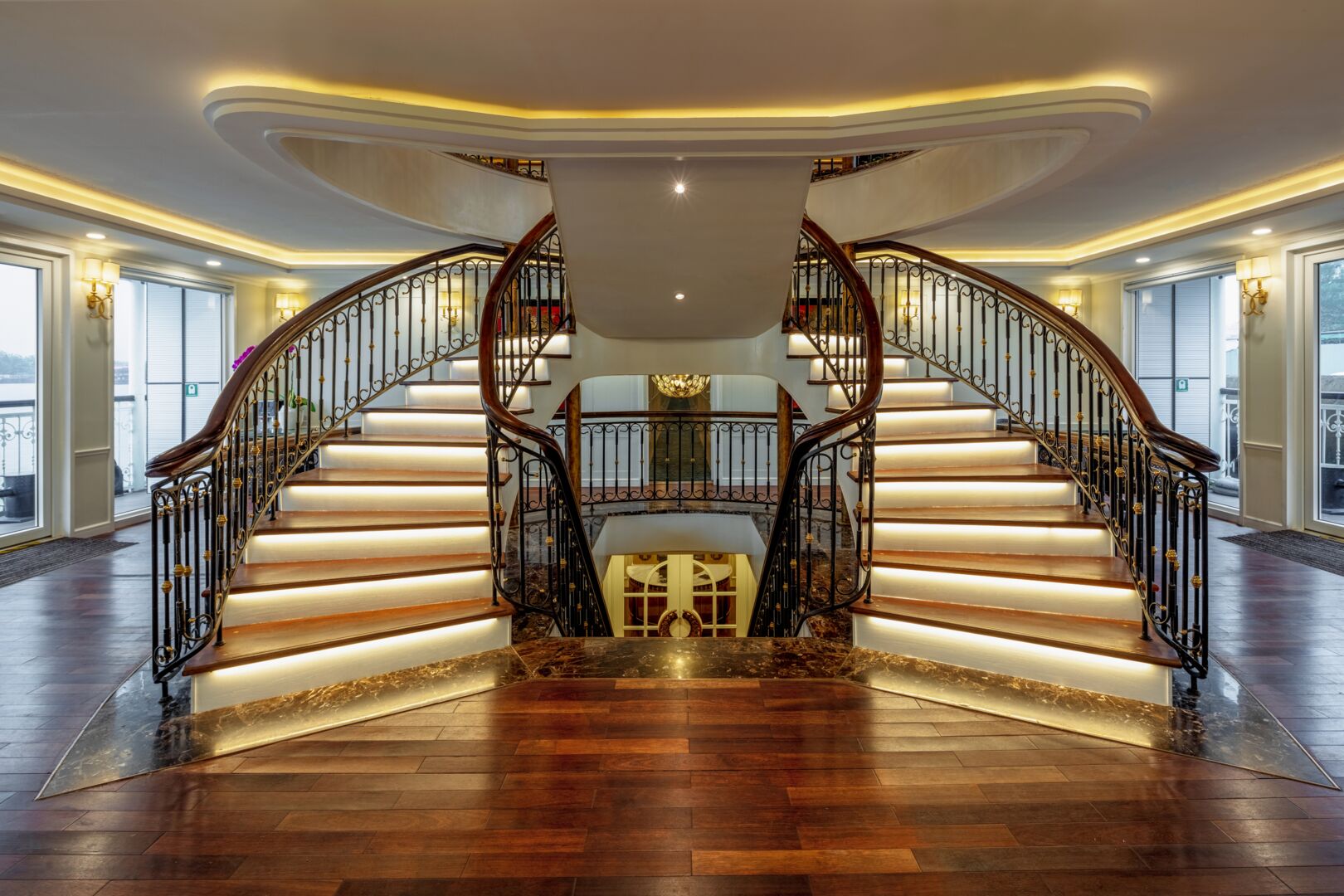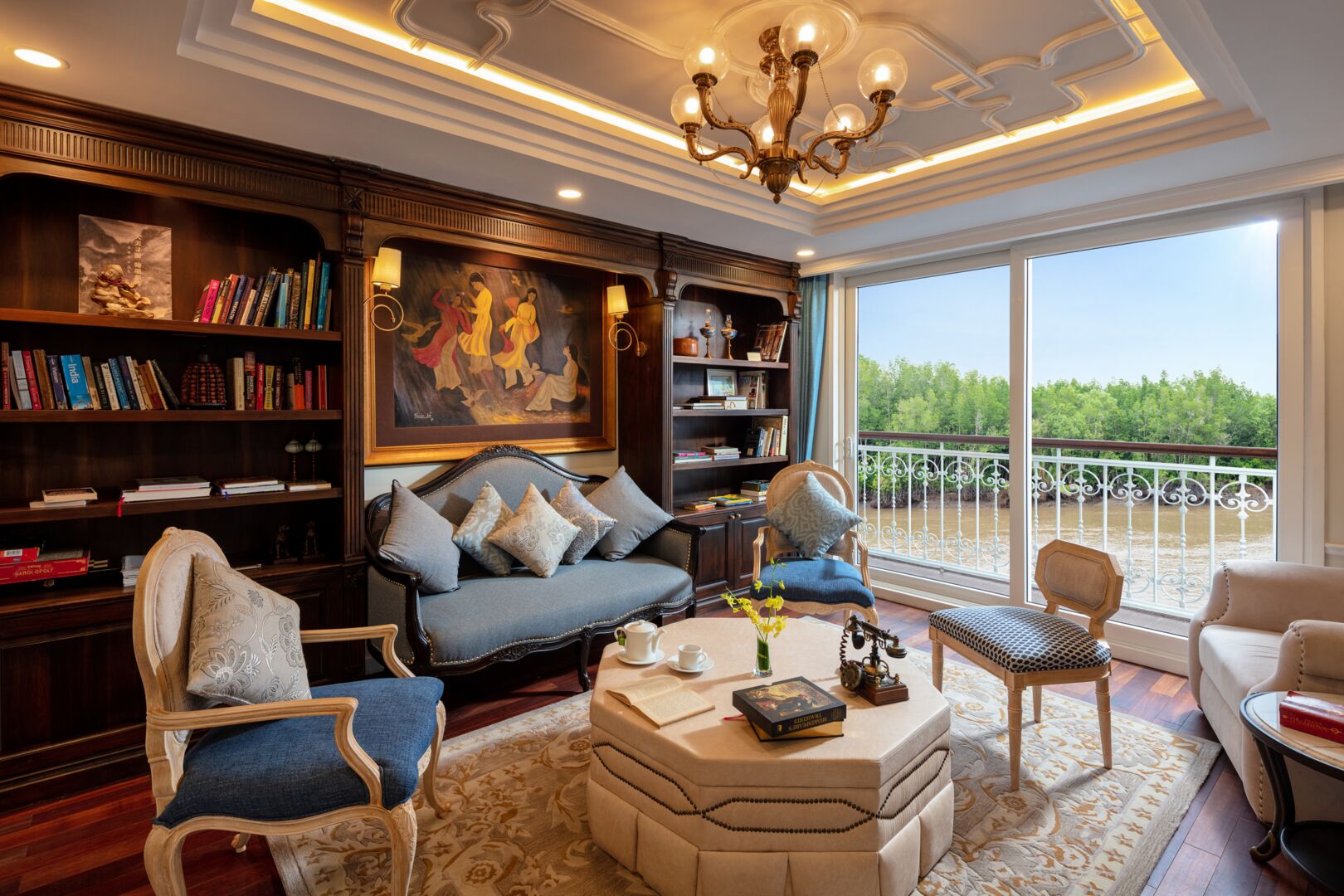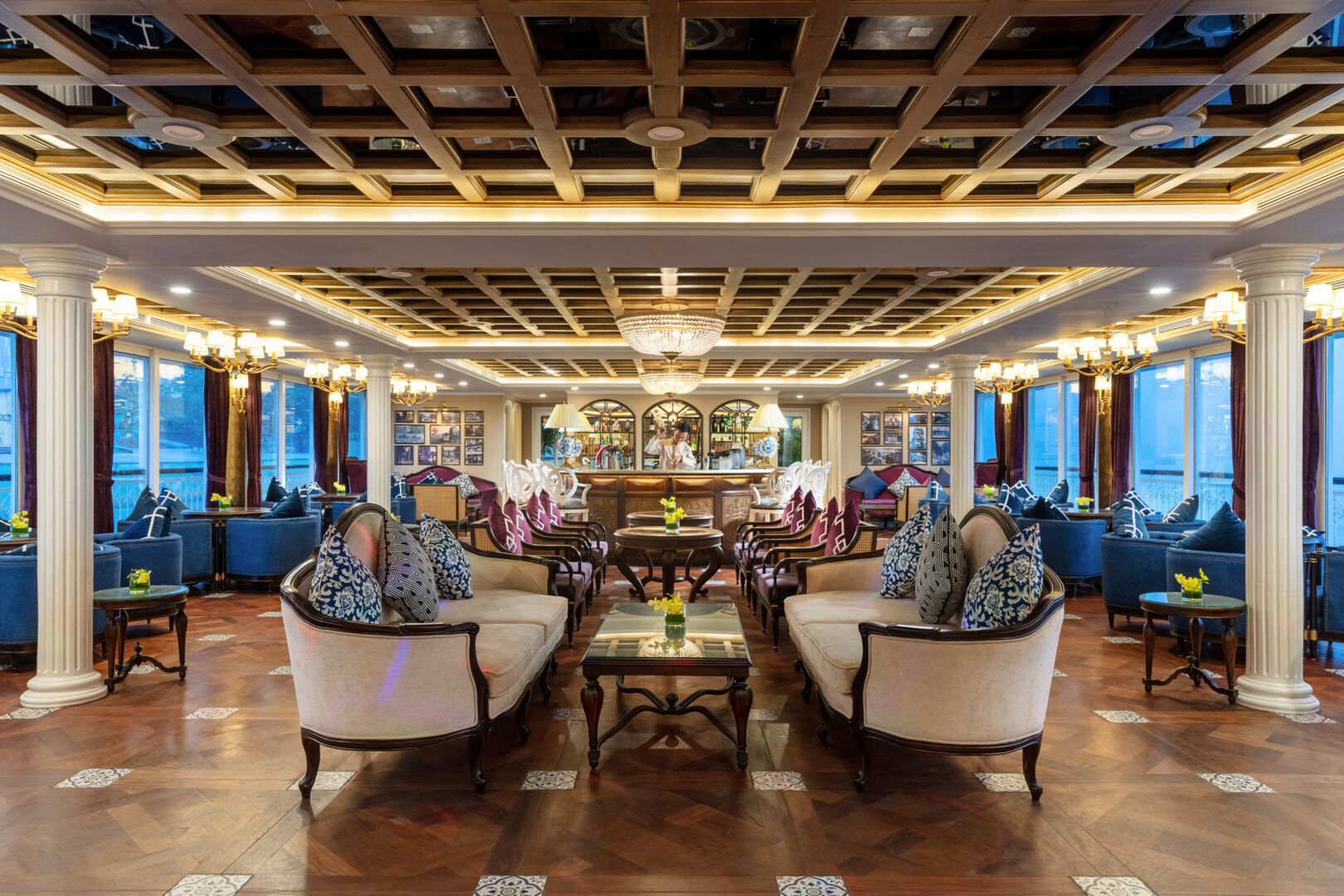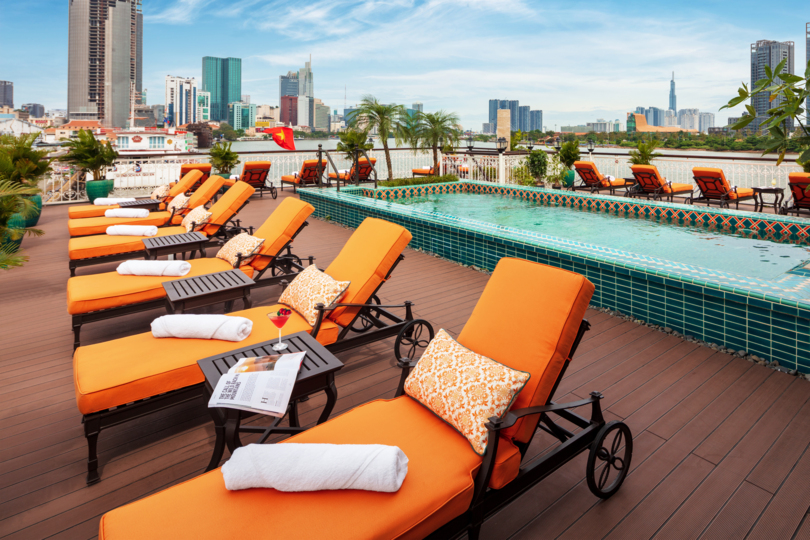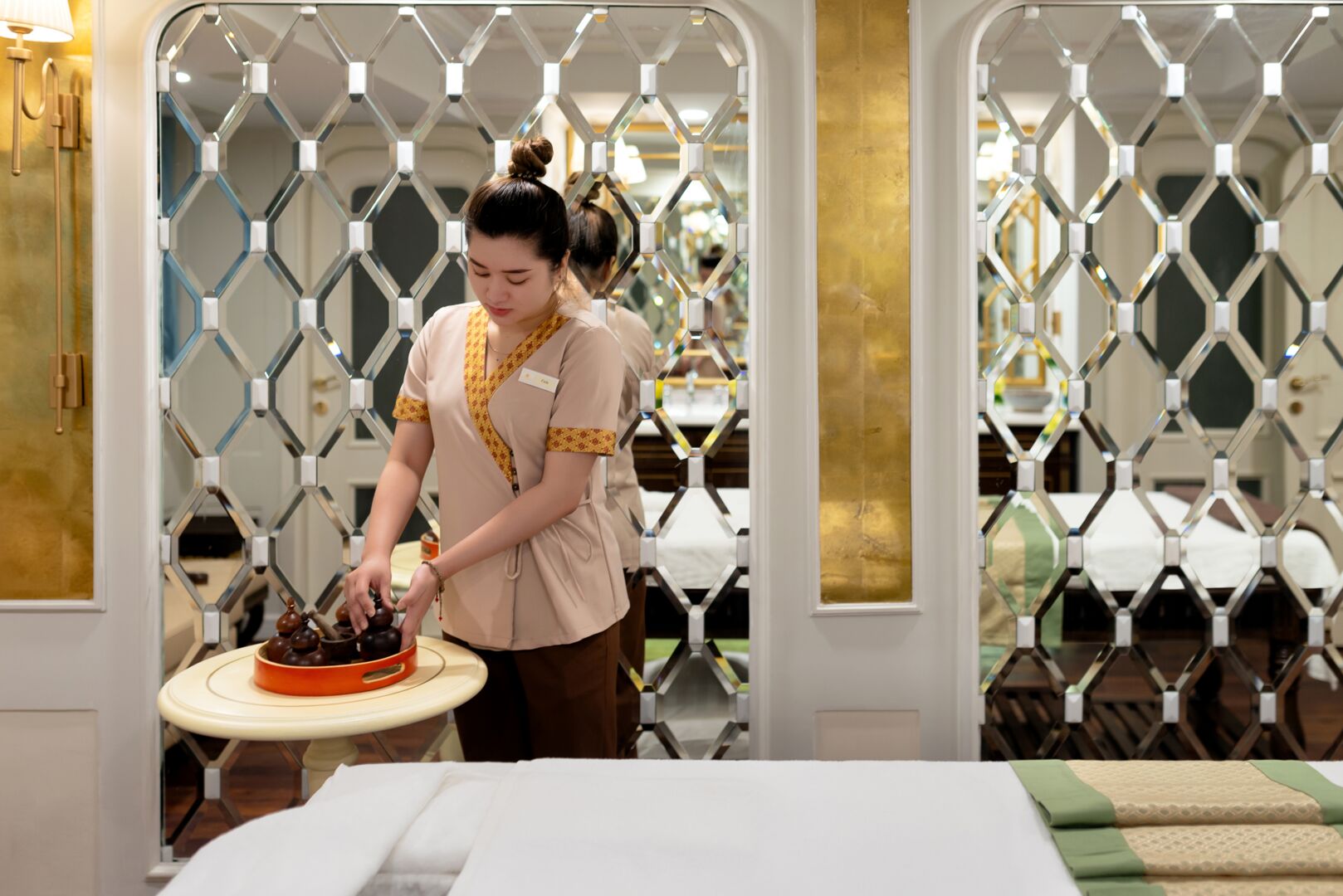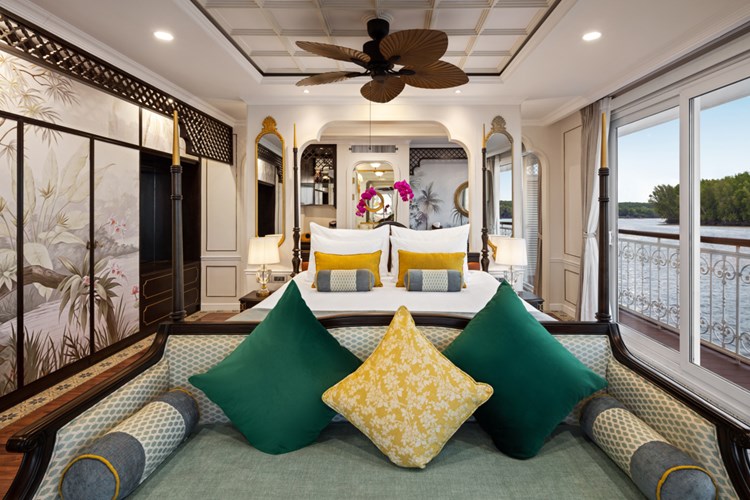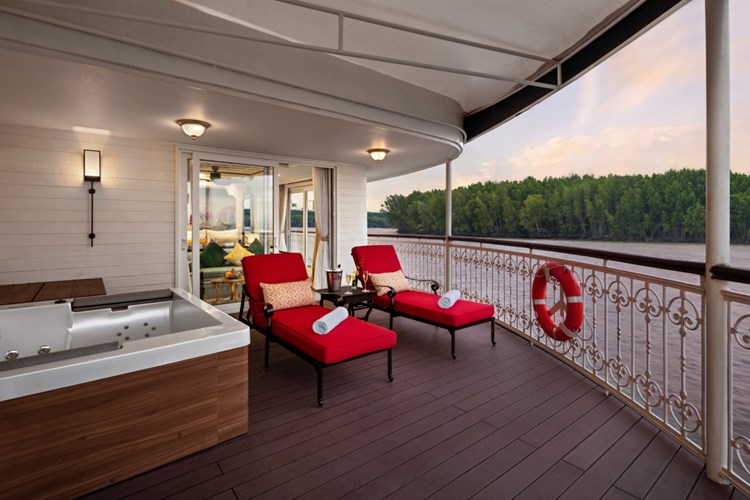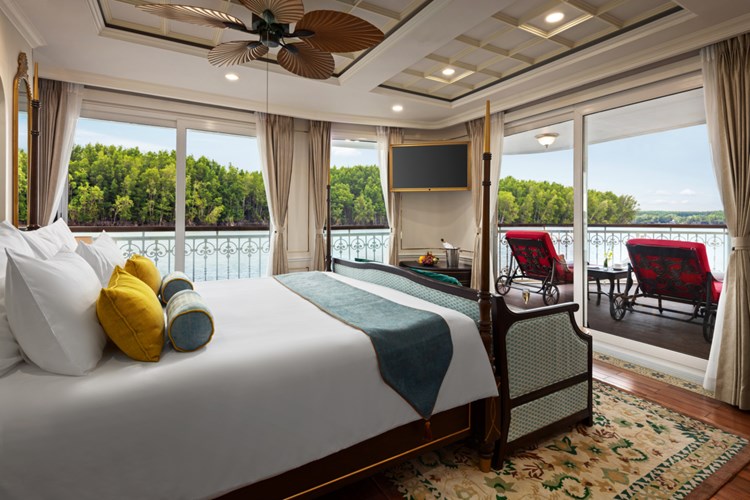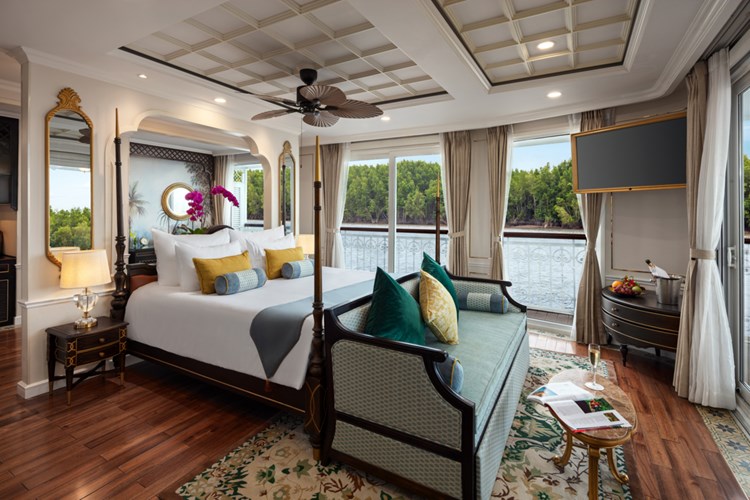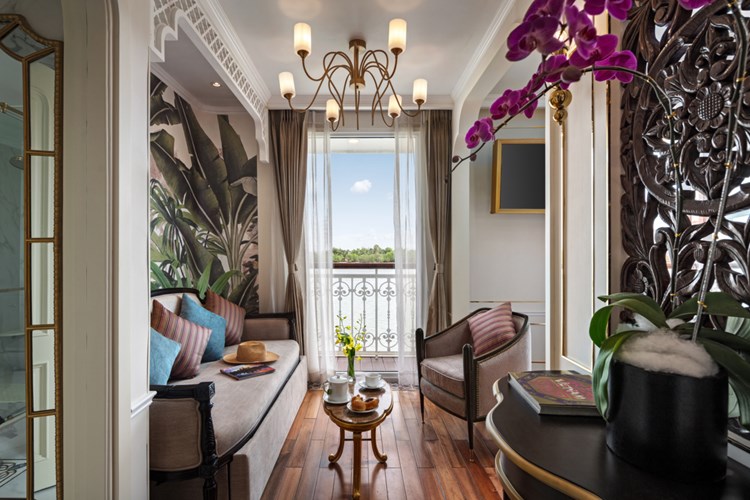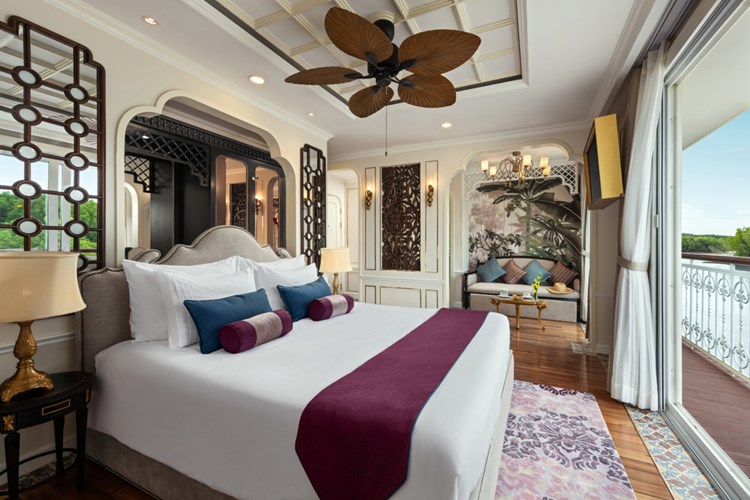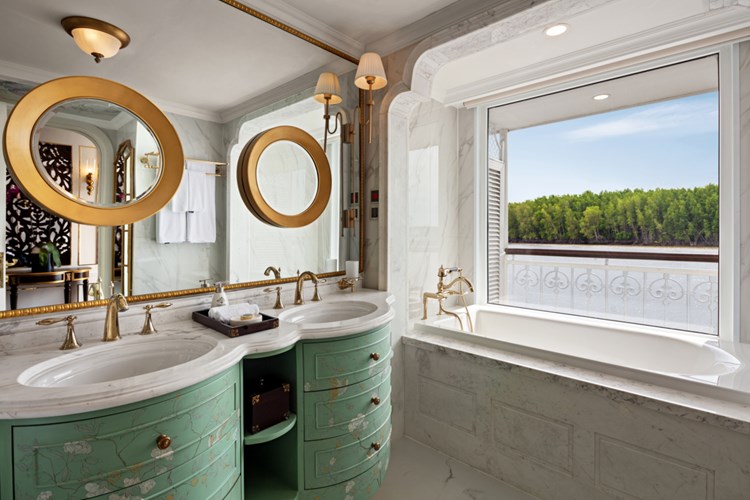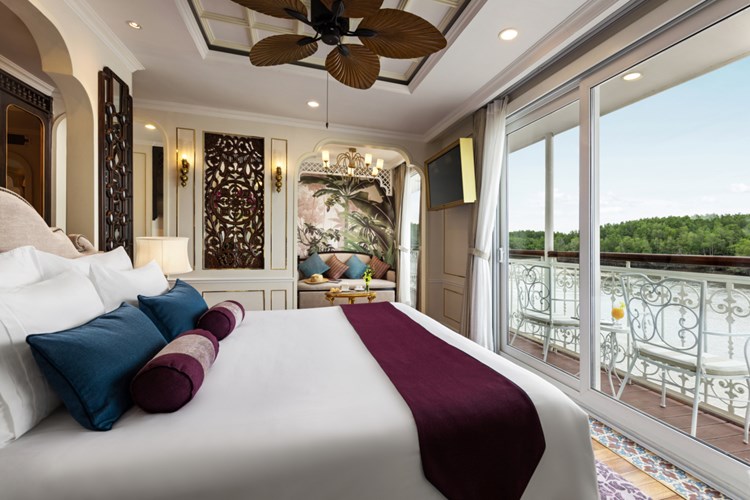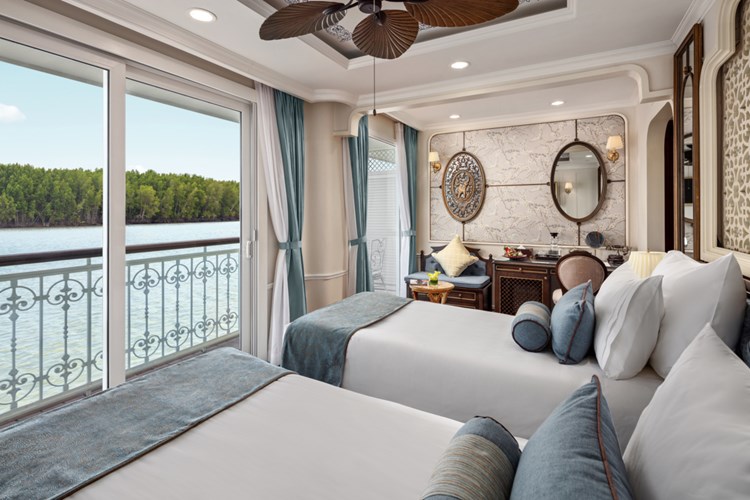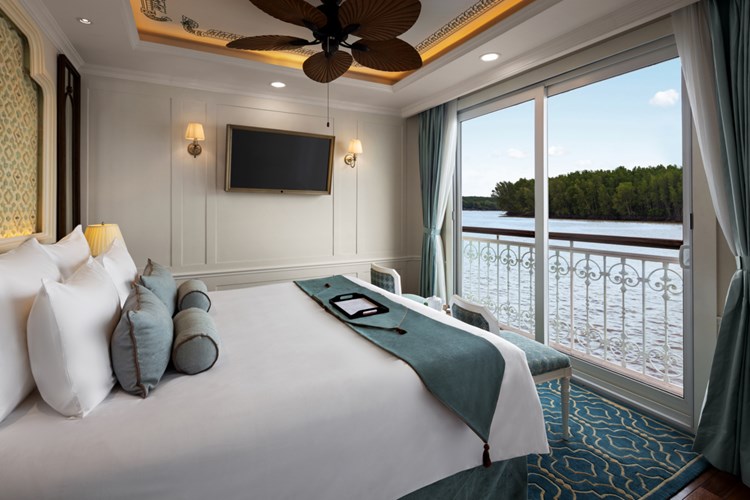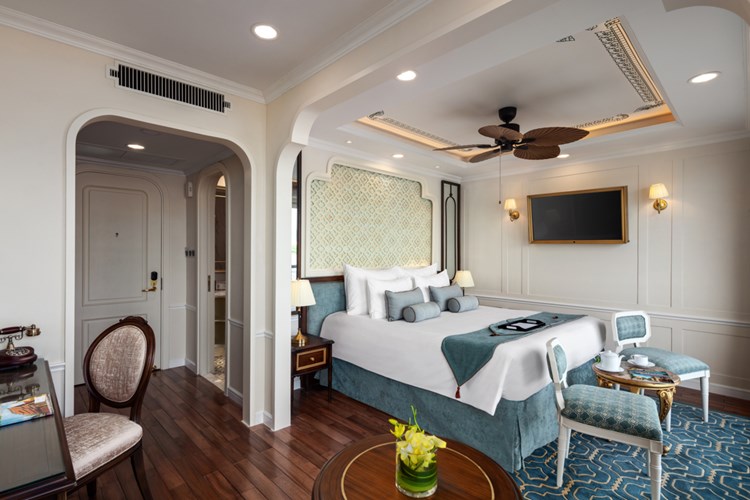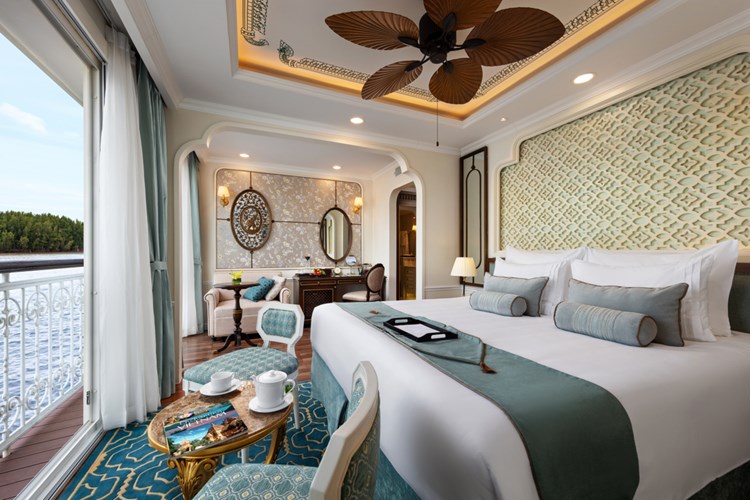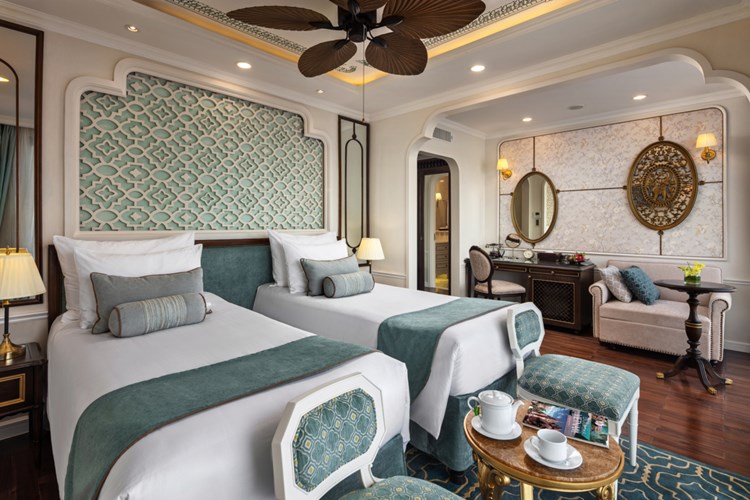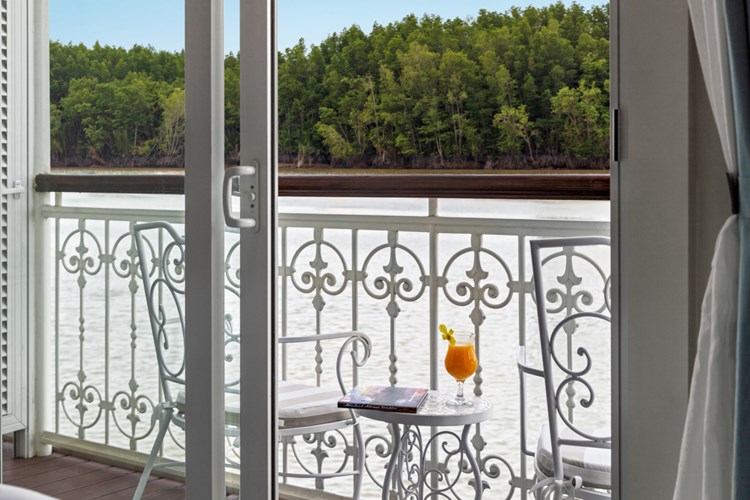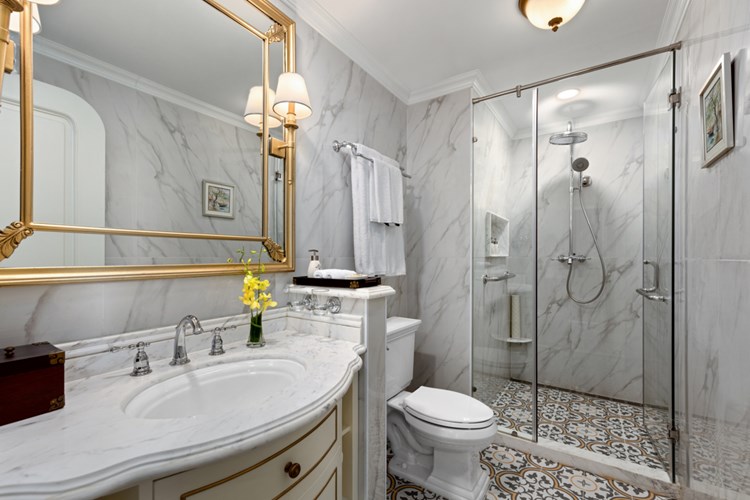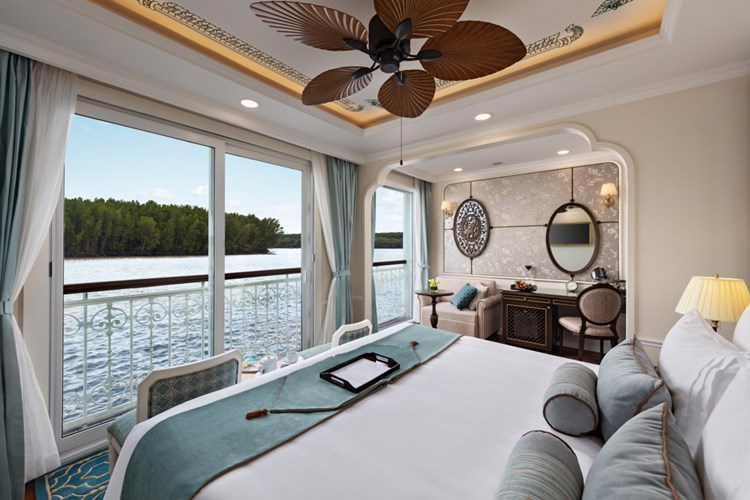Timeless Wonders of Vietnam, Cambodia and the Mekong
15 Day Cruise from Ho Chi Minh to Hanoi
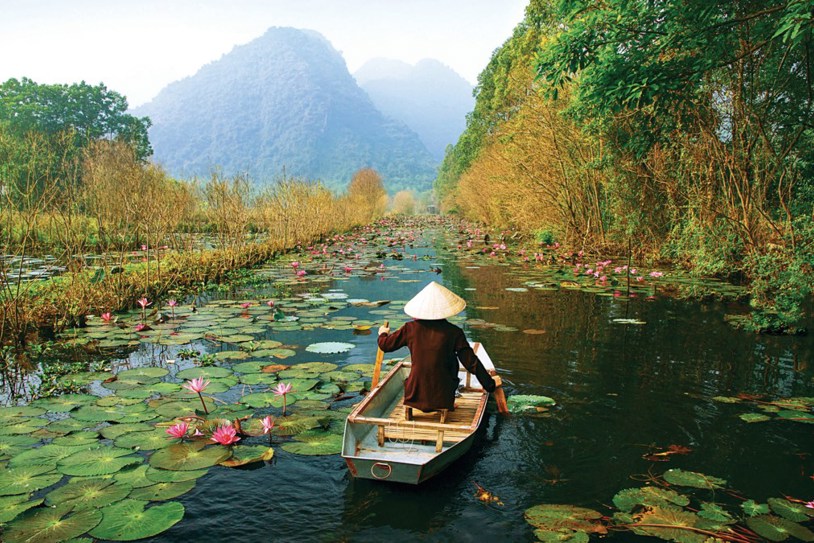
All-Inclusive River Cruises by Uniworld
If all-inclusive, luxury travel is your standard go-to, or are traveling to celebrate a milestone or special occasion, a boutique, luxury river cruise is the perfect choice. The world’s best and most awarded luxury river cruise line, for more than four decades, Uniworld has specialized in providing intimate and in-depth one-of-a-kind journeys for travelers seeking to explore the rivers of the world in exceptional style. On every all-inclusive Uniworld river cruise, you’ll be whisked away to a variety of destinations in one trip onboard a beautiful river ship. Along the way, you’ll enjoy five-star cuisine, unique local experiences, and exceptional service from the longest tenured crew in river cruising.
River Cruises
Whether you’re discovering charming towns or simply enjoying the view from the deck, you’ll explore at your own pace, all with your expert Experience Director and Experience Manager by your side so you can relax and enjoy your trip. Every detail of your river cruise is taken care of, so you can focus on what matters the most, enjoying the journey and making memories that last a lifetime.
View All River CruisesTwo of the most beautiful, historic, and friendly places in all of Asia, dynamic Vietnam and pastoral Cambodia, are intriguing studies in contrast. Each possesses its own unique charm and social traditions, its own tragic history and complex past.
- Reviews
- 6
- Average group size
- 120 passengers
- River Cruises by
- Uniworld River Cruises
- Travel style
- River Cruises

Select your date
Ships
The Original Floating Boutique Hotels - wake up to wonderful new place to explore every day, with warm and personalized service, unique design schemes
Mekong Jewel
Debuting in January 2020, the Mekong Jewel is the most luxurious ship on the Mekong river. This all-suite Super ShipTM vessel includes two dining venues: one main restaurant and an al fresco eatery on the upper deck. The Mekong Jewel replaces the Mekong Navigator and was constructed with sustainable, eco-friendly materials, and features a swimming pool, spa, sauna and steam room, gym, hair salon, nail bar, two lounges, and a library.
- Inauguration
- 2020
- Rivers
- Mekong
- Guests
- 68
- Staff
- 51
- Royal Suite
- 2 (924 sq ft)
- Grand Suite
- 2 (551 sq ft)
- Suite
- 30 (339 sq ft)
- Length
- 262 ft
- Width
- 42 ft
- Royal Suite (924 sq ft - 85.8 sq m)
- Note that Royal Suites have a fixed four-poster bed that cannot be separated
- Note that amenities may differ from those of a Uniworld company-owned ship
- Grand Suite (551 sq ft - 51 sq m)
- Note that Grand Suites have a fixed four-poster bed that cannot be separated
- Note that amenities may differ from those of a Uniworld company-owned ship
- Suite (339 sq ft - 31.5 sq m)
- Suites on the Sun Deck and Orchid Deck feature private enclosed balconies with floor-to-ceiling windows
- Suites on the Lotus Deck feature French balconies
- Note that amenities may differ from those of a Uniworld company-owned ship
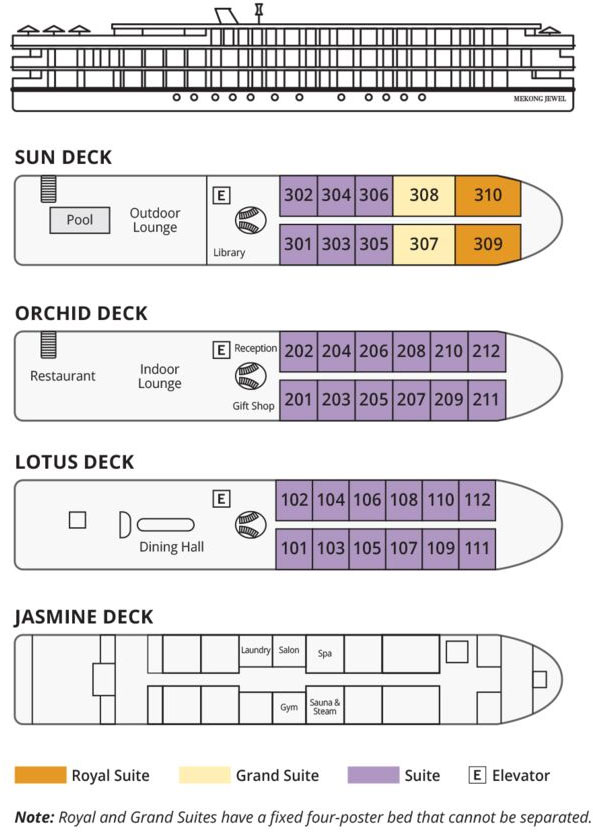
Included Highlights
Top Highlights
Authentic Dining
Excursions
Accommodations
Experiences
Cruise: Asia, Egypt, and Peru
Uniworld sails rivers in Asia, Egypt, and Peru
-
Official Languages: Khmer (Cambodia), Arabic (Egypt), Hindi (India), Spanish (Peru), Vietnamese (Vietnam)
-
Capital Cities: Phnom Penh (Cambodia), Cairo (Egypt), New Delhi (India), Lima (Peru), Hanoi (Vietnam).
-
Time Zones:
-
Currencies:
Cambodia: Cambodian Riel (KHR) ៛
Egypt: Egyptian Pound (EGP) E£
India: Indian Rupee (INR) ₹
Peru: Peruvian Sol (PEN) S/
Vietnam: Vietnamese Dong (VND) ₫
Dining
When dining onboard, you’ll be treated to world-class cuisine made from fresh ingredients, locally sourced from the destinations you visit.
Complimentary Beverages
-
Vietnam & Cambodia: Complimentary house wine, local spirits and beer, soft drinks, tea, and coffee will be served throughout the cruise. Onshore lunches include complimentary soft drinks, coffee, and tea. Onshore dinners include complimentary house wine, local beer, soft drinks, coffee, and tea.
-
India: Complimentary house wine, local spirits and beer, soft drinks, tea, and coffee will be served throughout the cruise. Onshore lunches include complimentary coffee and tea. Onshore dinners include complimentary house wine, local beer, soft drinks, coffee, and tea.
-
Egypt: Complimentary house wine, local beer, soft drinks, tea, and coffee will be served during lunch and dinner onboard.
-
Peru: Complimentary house wine and beer, spirits, soft drinks, tea, and coffee are served between 6 AM and 11 PM throughout the cruise. Onboard meals include complimentary house wine and beer, soft drinks, coffee, and tea. Onshore lunches and dinners include complimentary soft drinks, coffee, and tea.
Gratuities
Gratuities for all onboard personnel including the ship staff, crew, and Cruise Manager, are included.
Curated Excursions
Complementary and comprehensive shore excursions led by local English-speaking experts designed to provide the best possible experiences ashore.
Scheduled Airport Transfers
Complementary airport arrival and departure group transfers provided for flights that meet guidelines.
When dining onboard, you’ll be treated to world-class cuisine made from fresh ingredients, locally sourced from the destinations you visit.
Complimentary Beverages
-
Vietnam & Cambodia: Complimentary house wine, local spirits and beer, soft drinks, tea, and coffee will be served throughout the cruise. Onshore lunches include complimentary soft drinks, coffee, and tea. Onshore dinners include complimentary house wine, local beer, soft drinks, coffee, and tea.
-
India: Complimentary house wine, local spirits and beer, soft drinks, tea, and coffee will be served throughout the cruise. Onshore lunches include complimentary coffee and tea. Onshore dinners include complimentary house wine, local beer, soft drinks, coffee, and tea.
-
Egypt: Complimentary house wine, local beer, soft drinks, tea, and coffee will be served during lunch and dinner onboard.
-
Peru: Complimentary house wine and beer, spirits, soft drinks, tea, and coffee are served between 6 AM and 11 PM throughout the cruise. Onboard meals include complimentary house wine and beer, soft drinks, coffee, and tea. Onshore lunches and dinners include complimentary soft drinks, coffee, and tea.
Gratuities
Gratuities for all onboard personnel including the ship staff, crew, and Cruise Manager, are included.
Curated Excursions
Complementary and comprehensive shore excursions led by local English-speaking experts designed to provide the best possible experiences ashore.
Scheduled Airport Transfers
Complementary airport arrival and departure group transfers provided for flights that meet guidelines.
All Uniworld river cruises require a passport with at least two blank pages for entry stamps. Must be valid for at least six months beyond the conclusion of your trip.
Visa Requirements: Access the latest entry requirements for all your destinations with our user-friendly Destination Entry Guide. Powered by CIBT, the leading authority in travel visas and US passports; check back as often as you like before your trip to ensure you have everything you need before you depart.
-
Cambodia: Cambodia has a tropical climate with a distinct rainy season from May to October and a dry season from November to April.
-
Egypt: Egypt generally experiences a desert climate with hot summers and mild winters, characterized by low humidity and little rainfall.
-
India: India has a varied climate, ranging from tropical in the south to temperate in the north, with monsoon rains from June to September.
-
Peru: Peru features diverse climates, including coastal deserts, highland mountains, and Amazon rainforest regions, with variations in temperature and precipitation.
-
Vietnam: Vietnam has a tropical monsoon climate, with a wet season from May to October and a dry season from November to April, influenced by the monsoon winds.
Baggage Allowance
Baggage storage space onboard is limited. For their own comfort and convenience, Uniworld requests guests bring one (1) suitcase per person and one (1) carry-on bag per person (excluding purses). Airline baggage restrictions change frequently. Guests should check on the specific air carrier’s website for limitations concerning baggage weight, baggage size, carry-on regulations, and excess or overweight baggage charges.
Luggage Limits for Included, Internal Flights
-
Egypt: For flights within Egypt, passengers are allowed one (1) checked bag weighing no more than 50 pounds and one (1) carry-on bag weighing no more than 17 pounds.
-
Peru: For intra-Peru flights, passengers are allowed one checked bag weighing no more than 50 pounds and one carry-on bag weighing no more than 17 pounds.
-
Vietnam & Cambodia: For intra-Vietnam and intra-Asia flights, only one (1) suitcase per person can be checked, and it must weigh no more than 44 pounds total per person (not per bag). Each checked bag should have dimensions not exceeding 62 linear inches.
-
Packing Tips for a River Cruise
-
Packing for a river cruise will vary depending on the duration of the trip, the time of year, and the activities planned. Here is a general packing list to help you get started:
-
A valid and current passport.
-
A copy of your travel insurance and any necessary travel documents.
-
Your Cruise Travel Companion, easily accessible should you need to reference it.
-
Attire is more casual due to the region’s warmer temperatures. Comfortable, lightweight clothing in lighter colors is strongly recommended.
-
Comfortable walking shoes with good ankle support. You will participate in a significant amount of walking over uneven terrain during your time ashore.
-
A lightweight waterproof jacket (preferably a hooded one) for all seasons, or even a heavier weight windbreaker for colder temperatures.
-
To enter the temples and other holy sites, guests should ensure that their shoulders and knees are covered.
Destination Specific Packing Tips
-
Packing for Peru: Quick drying and lightweight clothing, lightweight long pants and rain gear, long-sleeved tops for jungle excursions, wide-brimmed hat, extra socks, and a bathing suit.
-
Packing for an India, Vietnam or Cambodia: Quick drying, lightweight clothing, and a bathing suit if you’d like. Casual and cool attire is appropriate for evening wear. Sport jackets and cocktail dresses are not required.
-
Packing for Egypt: Quick drying, lightweight clothing, and a bathing suit if you’d like. Casual and cool attire is appropriate for evening wear. At least one “smart casual” outfit for the Gala Reception. Sport jackets and cocktail dresses are not required.
Laundry Services Onboard
The ships provide washing, drying, and ironing services for a fee. The Mekong Jewel, sailing in Vietnam and Cambodia, will have a self-service launderette however all other ships do not have a self-service launderette or dry-cleaning facilities onboard.
Electrical Currency on Asia, Egypt, and Peru Ships
-
Egypt and Peru: Voltage is 220V/50Hz in all hotels and onboard the ship. To use any electrical product from the U.S., you will need a 3-pin plug adapter and a voltage converter.
-
India: Voltage is 220V/50Hz in all hotels and onboard the ship. On the ship, outlets that accommodate both 110V and 220V appliances are available in the suites.
-
Vietnam & Cambodia: Voltage is 220V/50Hz in all hotels and onboard the ship. On the ship, outlets that accommodate both 110V and 220V appliances are available in the suites. In addition, you will need a two-round-pin-type plug adaptor in Cambodia, and a three-flat-pin-type plug adaptor in Vietnam.
Using a Hair Dryer Onboard
Every stateroom or suite bathroom is stocked with a hair dryer, bath and body products, and a luxurious bathrobe for each guest.
Air Conditioning
Every stateroom and suite has an individual thermostat for air-conditioning and/or heat.
Connecting to the Internet & Wi-Fi
-
India: Internet service may not always be available in some places the ship sails through.
-
Egypt: Internet connection might not be available in remote areas or when transiting locks.
-
Peru: There is no mobile or wireless network coverage outside of the city of Iquitos. There is no Wi-Fi or Internet connection on the ship.
-
Vietnam & Cambodia: Internet connection might not be available in remote areas.
Included, once-in-a-lifetime experiences arranged privately for Uniworld guests. All shore excursions are carefully coordinated to the ship’s daily schedule.
-
Egypt: Group shore excursions are led by the Egyptologist
-
Peru: Group shore excursions are led by a naturalist guide
-
Vietnam & Cambodia: Group shore excursions are led by local experts
Masterpiece Collection (Additional, Optional Experiences)
Uniworld’s curated Masterpiece Collection of optional excursions go above and beyond the included experiences and are available for an additional charge.
We highly recommend having travel insurance that covers medical expenses while abroad.
Spa Treatments & Massages While Cruising*
Spa treatments and massage services are available onboard the ship.
Special Dietary Needs
Please notify GET or Uniworld if you have special dietary concerns or considerations that need to be considered while traveling. Uniworld staff will do their best to ensure that your request is accommodated, but GET cannot guarantee that requests can be met in all cases.
Mobility Concerns
Passengers must advise GET at time of booking of any physical, medical, or other special needs that require accommodation.
Uniworld does not employ staff nurses or doctors onboard its ships, nor can they provide personal medical or mobility devices (such as wheelchairs, hearing aids, or prescription eyeglasses) or services of a personal nature (such as pushing a wheelchair or assistance in eating, toileting, or dressing). A companion capable of providing such assistance must accompany any passenger who requires services of a personal nature. Please note, embarkation/disembarkation facilities may not be navigable using wheelchairs, scooters, walkers, or the like. As well, excursions often include rough terrain, extensive walking over cobblestone streets, uneven pavement, or stairs.
Traveling with Medications
In accordance with international laws, no over-the-counter medications are available on Uniworld ships. Pack a plentiful supply of any medication you may need while on vacation. Click the link to learn more about traveling with medications.
*Available on select ships. Additional fee for spa services.
Gratuities for onboard and onshore personnel, ship staff, crew, Cruise Manager or Egyptologist, local experts, drivers, are included during the cruise as well as on any pre- or post-cruise land extensions.
Your GET Wishlist
Reviews




